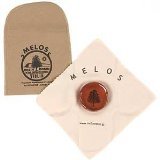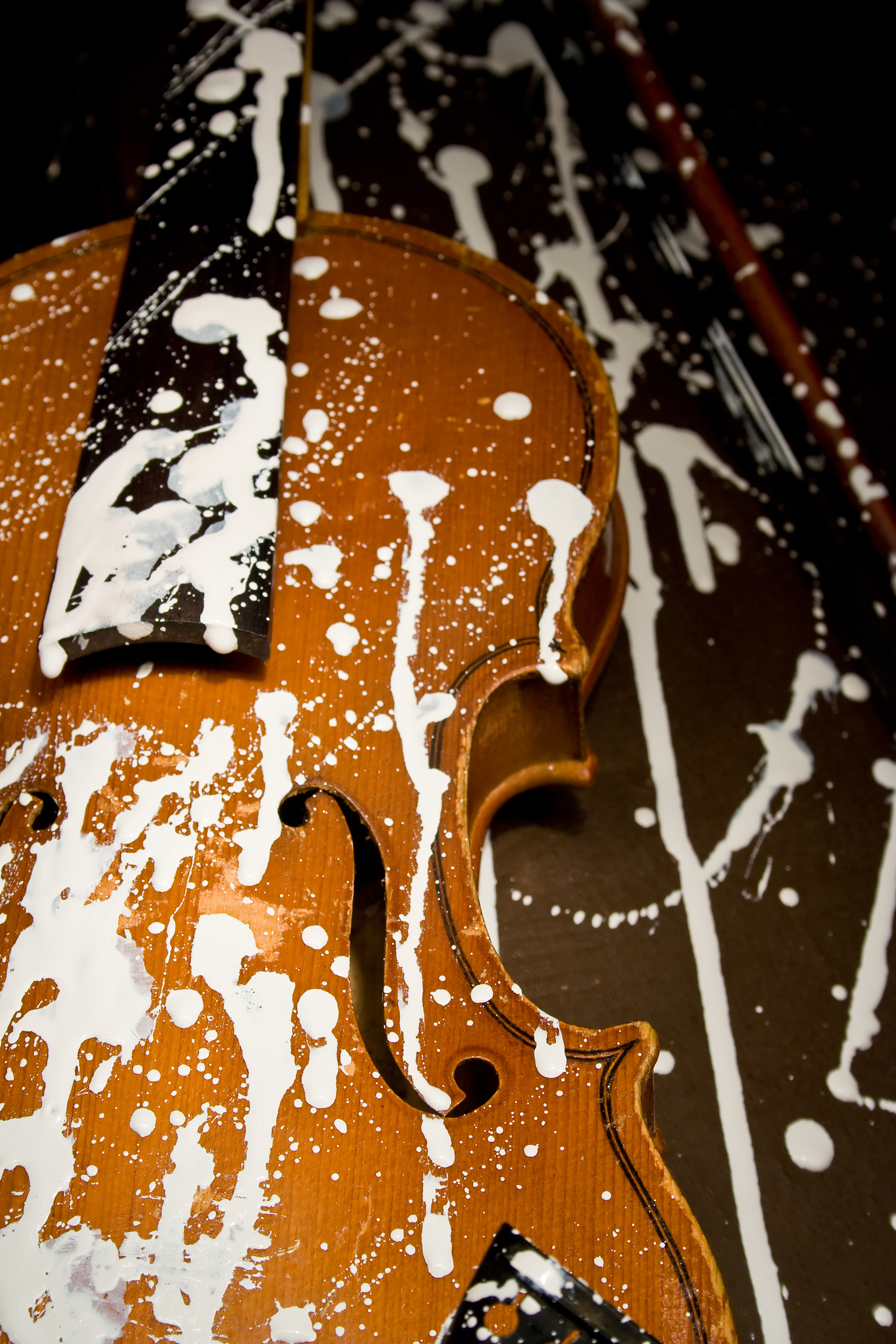Violin Rosin - What you really need to know about one of the smallest violin accessories!
"Johnny you rosin up your bow and play your fiddle hard." Most of us have heard that line of lyrics from Charlie Daniels popular 'Devil Went Down to Georgia', but how many of us really know what it means to "rosin up your bow".
Read below to discover which violin rosin is perfect for you. Or skip right to the bottom of the page for fun, fast facts and rosin tips.
With an exception of one or two brands, most rosins hover in a very affordable price range of $5.00 to $12.00. And unlike other routine maintenance costs like new strings, and re-hairing the bow, rosin will last a long time. So, find the brand that you like and that you feel compliments your strings the most.
Another big thing you'll need to decide is whether you want more grip and grit or a lighter and smoother feel to your bow.
See the differences in color below, the dark one on the left will give your bow more grip, bite, and traction because it is softer. The light amber one on the left is harder and leaves a finer smoother powder finish on your bow.
Violin rosin for students on a budget.
Sometimes you will run across student-grade rosins that are just a couple of dollars. These rosins will work, however they are stickier than more expensive rosins and can leave a thick residue on the strings, instrument, and bow.
Kaplan Dark Artcraft Rosin - An affordable alternative to 'cheap' gritty rosins, this student-grade violin rosin is made out of a finer resin than other cheap rosins.
A. B. Dark Rosin - Is another dark rosin for beginners and students. Unlike many student-grade rosins, this one does not come in a box but in 'cake' form. Most violinist prefer non-boxed rosin.
For a couple of dollars more try Dominant Violin Rosin - This rosin was designed specifically for synthetic strings. It produces less dust than other 'light' or hard rosins. Reviews are excellent on this rosin, and most violinist agree that it is a solid choice.
What are the benefits to buying a more expensive rosin?
Cheap student-grade rosins tend to be sticky, and sounds grainy, and produce more powder than the professional grades. Professional-grade rosin helps renders a smoother, controlled tone. Because it is usually a made from a purer resin, expensive rosin produces less powder and sticky messes. Some of the finest expensive rosins, that also elicit top notch reviews are:
Andrea Bang Rosin by far is one of the most talked about rosin's on violinist forums. It is pricey, but some claim the benefits far out-weight the $30 or $40 you'll pay for a 'cake' of rosin. It comes in two varieties for violinist, Solo and orchestra. Solo rosin provides powerful, yet sensitive sound for the soloist. It enables maximized projection and extra clear bow articulation. Orchestra rosin is designed to provide a more blended sound for ensemble playing, without sacrificing clarity or articulation." Andrea Bang is the new name for the very popular Tartini line of violin rosin.
Another rosin that is gaining a lot of recognition is Bakers Rosin. After checking into it, I am definitely curious and want to try it myself. Here's the link to their website, bakersrosin.com.
This rosin has been featured on countless forums, websites as well as in Fiddler Magazine. If you want to give it a try, you'll have to sign up on their mailing list and become a 'member'. Due to limited production, clients on their mailing list receive first chance at ordering.
Liebenzeller Gold was a very popular violin rosin for many years until they discontinued it. Some violinist and luthiers claim that Melos Violin Rosin is a complimentary substitute for Liebenzeller. Each rosin type is especially designed for that specific instrument and season, softer dark for winter and harder light for summer. Because it is made when the order is placed it is always fresh and is 100% handmade.
Choosing a rosin for specific instrument needs.
Some rosin makers are even beginning to add precious metals to their 'secret' rosin recipes. It is believed that these metals change the friction of rosins, creating different tonal qualities. The debate is out as to whether or not violinist think that precious metals really make a difference. But if you think it might, here are some options to try:
Does your instrument need extra warmth and added softness?
Try Gold rosin. It is said to produce a warm tone, soften a harsh-sounding instrument, and produce a clearer, more defined tone. Pirastro Goldflex is a leading brand that uses gold.
Want to brighten the sound of your violin?
Silver rosin creates a bright focused tone that is especially good for high notes and strings.Geipel Silver Rosin is a great option for violinist looking to enhance the quality of their upper registers.
Looking for a rosin that makes playing easier for beginners?
Copper can help! It creates a warm velvety-soft tone, similar to that of a muted instrument. This enable beginners to create a nice tone more easily.
Choosing a rosin to compliment your strings.
Many string companies are beginning to produce violin rosin that compliments their line of violin strings. Pirastro and Dominant
are two of the leading brands of violin strings that have added rosins to their line of violin products.
Choosing a rosin that fits your climate.
Weather can have a big impact on the effectiveness of your rosin, this is due to the rosins' hard or soft consistency. For dry cool climates dark rosin is a great match. For hot humid weather light rosin is a better fit.
Hill Dark Rosin - This dark rosin is very popular amongst students and professionals. It is your basic rosin, but grips the string well, and aids in projecting the sound of your violin. Choose this rosin for cool dry climates or for use during the winter.
Hill Light Rosin - A good hard rosin suited for hot humid weather, and summertime. Goes on smooth with a light grip.
Tips on applying violin rosin "Cake" rosins or those that aren't in boxes, should be rotated to keep the rosin top flat; deeply grooved rosin can damage the sides of the bow. Apply rosin in long slow strokes back and forth along full length of bow. Frequently clean excess rosin residue off of bow stick, violin, and strings. Do not clean bow hair. If you feel like your rosin is no longer working, it may be that your bow hair needs to be replaced.
Did you know.....
1. Rosin is also known as colophon, and colophony.
2. Rosin is a resin collected from pine trees.
3. The process of collecting the resin is similar to collecting maple syrup. A small cut is made into a live tree, and then the tree is fitted with a drip channel just below the cuts.
4. Rosin makers use individualized recipes. All recipes vary, sometimes additional tree saps or precious metals are added to the rosin. After getting the rosin's mixture just right, makers will allow it to set up and harden.
5. Rosins come in different colors, dark and amber-gold. The color is determined by the time of year the resin is collected. Late winter and early spring will produce a hard, gold rosin. If the resin is collected in summer or fall, the color darkens and the consistency soften.
6. Rosin helps to create a better friction, or grip between the bow and the strings. Without this friction, there wouldn't be very much musical sound!
Rosin (in a powder form) is used in many sporting events. Ballet dancers rub their shoes in powdered rosin to prevent slipping on the stage floor. Boxers use rosin to avoid slipping in the rink. Gymnast use it on their hands to improve grip. Bull riders wanting a better grip, will rub rosin on their rope and glove. Baseball pitchers and professional bowlers use a small amounts of rosin on their hands for better ball control. The starting line of drag races are covered in rosin to improve traction.




























